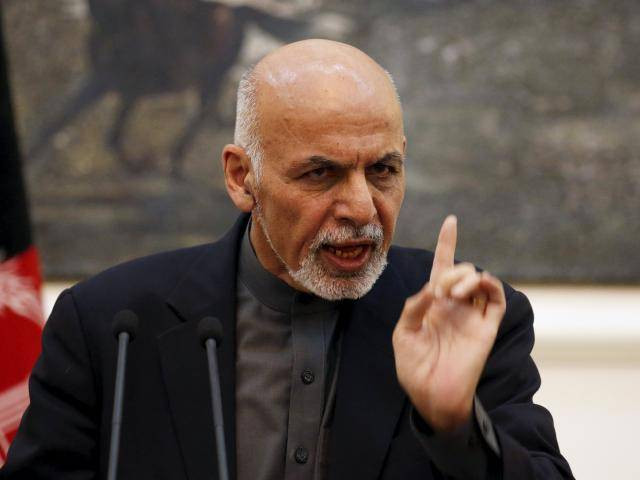
Pak-Afghan border shut in Chaman after Afghans desecrate Pakistani flag
The Afghan state, never very strong even at the best of times, has come under pressure from several directions. The Taliban have become active this fighting season, sensing that the withdrawal of the United States and its allies has created an opportunity it must avail while the Afghan military is still struggling to develop into a competent fighting force. Added to the increasing pressure exerted by the Taliban in the country is the arrival of the Islamic State in Iraq and Syria. ISIS is also seeing an opportunity to create a presence outside the Arab world. Adding to these two pressures is the inability of the country’s political system to develop into a functioning democratic entity that can replace the use of violence as a way of expressing interests with political discourse. Then, there is the growing weakness of the economy, which does not have a domestic resource base that can be used for meeting the basic needs of the people.
The growing presence of ISIS in the country became apparent with the July 23 attack on a large group of Hazaras, a Shia-community based in and around the province of Bamian. The group had gathered to protest the government decision to bypass their area in building a power line that would bring electricity from the power-surplus Central Asia to the power-deficit South Asia. The Turkmenistan-Afghanistan-Pakistan- India project was one of the major connectivity projects that had been developed to knit together Central and South Asia. Protest leaders claimed systematic bias against Hazaras by the government. The Hazaras have only in the past decade tried to shake off a long history of oppression. The attack that killed at least 80 people and injured another 230 was not the first time the Shia community had been attacked by Sunni extremists. In 2011, a suicide bombing on Shia shrine killed 63 people. The Hazaras have also come under attack in Balochistan, which had a sizeable presence of the community.
Spokesmen for ISIS quickly claimed responsibility for the Kabul attack. If, indeed, carried out by this group, known as Daesh in Afghanistan, it would be the first major urban attack in the country by radical Sunnis and could signal their first deliberate effort to target the country’s Shia minority. According to one account, “hundreds of Hazaras had reportedly fought alongside President Basharal Assad’s troops in Syria against Sunni groups including the Islamic State in recent years, making Hazaras a likely target for the extremist group’s loyalists back in Afghanistan…During the late 1990s, when the Taliban regime held power in Kabul and most of the country, it banned observing Shia religious holidays in public.”
Afghan president invokes Allama Iqbal to garner attention of Pakistani leaders
ISIS seemed determined to stoke sectarian strife in the country. Shias make up about 10 per cent of the Afghan population with power bases in Kabul and the north-central province of Bamian. There are outside forces that would get involved in case this conflict grows. Iran, which took in huge numbers of refugees from Afghanistan’s wars, has sought increasing influence in post-war Afghan society. According to Mohammed Alizada, a Hazara member of the Afghan parliament, “the Islamic State has two factions in Afghanistan, one made up of moderate former Taliban members and one more foreign-dominated and extreme group.” If the latter grew stronger he didn’t think the Afghan government would have the capacity to defend Shias against them without the international community’s help.
The international community, led by the United States, seemed inclined to lend a helping hand but without getting too involved in the conflict. This was the approach the Obama Administration had developed during his second term in office. Under the Obama Doctrine, nation-building was to be left to the nations themselves with only marginal help from the United States. In early July 2016, the president announced slowing the planned withdrawal of his country’s troops, leaving about 8,400 through the end of 2017. Many American experts believed that Afghan forces were not yet prepared to defeat the Taliban on their own and that the United States needed to reinforce its message of long-term commitment to the country. But the task of readying the Afghans to do the fighting was proving to be complicated and expensive and may not be sustainable under the current political environment in the United States.
Published in The Express Tribune, August 22nd, 2016.
Like Opinion & Editorial on Facebook, follow @ETOpEd on Twitter to receive all updates on all our daily pieces.














COMMENTS
Comments are moderated and generally will be posted if they are on-topic and not abusive.
For more information, please see our Comments FAQ